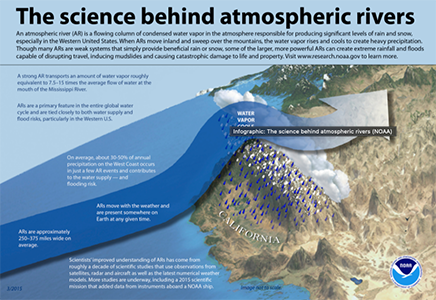||| FROM SAN JUAN COUNTY COMMUNICATIONS |||
The massive rain event last week caused a wide range of impacts in the county and caught many islanders off-guard. The severe weather was caused by an atmospheric river: a long, narrow band of water vapor that often is released as rain or snow when it makes landfall. While the scope and damage may be unprecedented, the warming atmosphere caused by climate change means that these kinds of events are likely to become more frequent and severe.
As we have seen, these extreme weather events can present many challenges for our islands. Excessive rainfall can result in flooding and landslides which damage homes and businesses. Roads and culverts not designed for these intense storm deluges can be washed out or structurally compromised. Storm run-off delivers debris and pollutants to streams and wetlands before ultimately ending up in the Salish Sea.
San Juan County has been working diligently to address these hazards. Annual street sweeping and catch basin cleaning helps to ensure drains are clear before the storms set in. The County is working to assess, repair, and replace culverts and drains that are not able to meet the increasing demands of high-intensity and/or long-duration storm events. Projects currently in the works including culvert replacements at Cormorant Rd/ Fishtrap Creek, Killebrew Rd/ Bayhead Creek, (and now Pt Lawrence / Doe Bay Creek due to the storm), and stormwater infrastructure upgrades at Prune Alley on Orcas and the Village Rd on Lopez, will help to ensure access and avoid future storm damage. The County’s Clean Water Utility, along with Public Works, fund and implement this important work.
How can I prepare for more rain events like this?
As we clean up and catch our breath from last week’s storm, it’s a great time to consider the following guidance and prepare your property for winter storms.
- Make sure your drains and driveway culverts are clear before the rainy season starts and check them often during Fall as autumn leaves and windstorms continually clog them
- Consider your lot drainage; there is a delicate balance to be struck. The goal is to divert water away from your home where it can cause damage, but you want to avoid de-watering your site too much so that you still have the water you need during the summer dry season to support vegetation and your well recharge
- Consider installing on-site water storage systems such as cisterns or rain barrels to capture winter rains for use in the drier months
- Consider installing a rain garden in the wet areas of your property or protect on-site wetlands to help slow and filter the flow of water through the site.
If you have water running through your property in a stream, wetland, pond or conveyance ditch, work with your upstream and downstream neighbors to help one another understand and manage the storm flows. Lot-to-lot drainage as well as drainage flowing through road cross culverts are the responsibility of individual landowners to manage, without causing harm to others.
The County is available to offer some technical assistance to landowners regarding water resources on private property. Remember, the choices you make on your property will affect your downhill neighbors. Thoughtful preparation can help the entire community!
**If you are reading theOrcasonian for free, thank your fellow islanders. If you would like to support theOrcasonian CLICK HERE to set your modestly-priced, voluntary subscription. Otherwise, no worries; we’re happy to share with you.**









Timely entry, thanks!
And three additional “rivers” are imminent, within the next few days, looks like! Detailed information at UW Climate Scientist Cliff Mass’ blog for 11/24: https://cliffmass.blogspot.com